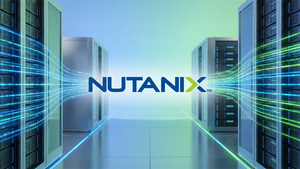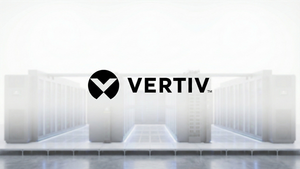Businesses today face a big challenge. Technology is evolving fast, and keeping up isn’t easy. Cloud computing, once a simple solution for storing files, has now become more complex. Many companies struggle to adapt and make the most of their potential. Here’s the situation: new trends like edge computing, AI integration, and hybrid cloud setups are changing IT solutions. According to IDC’s cloud forecast, over 90% of organizations are expected to adopt advanced cloud services by 2025, signaling a widespread transition across industries. This shift can seem overwhelming, but it offers significant opportunities for growth. This blog simplifies everything in clear terms. You’ll learn about key trends and practical insights to manage this transition effectively. Ready to discover how the cloud impacts your business? Keep reading!
Key Trends Reshaping Cloud Computing
Cloud computing is evolving faster than ever, shaking up IT strategies worldwide. Businesses now explore smarter and more adaptable approaches to meet modern demands.
Increased Adoption of Edge Computing
Businesses are turning to edge computing as data processing demands skyrocket. It brings computation and storage closer to where data is generated, reducing latency and enabling real-time decisions. For industries like manufacturing or retail, this means faster response times and smoother operations. By 2025, edge devices will process 75% of enterprise-generated data according to Gartner, underscoring the critical role of edge computing in future IT infrastructures.
“Speed saves money—and edge technology delivers it,” said an IT analyst from Gartner. Companies integrating IoT are seeing major benefits, too. Sensors in smart factories analyze machine performance instantly at the source instead of sending it to the cloud for processing. This not only cuts costs but also enhances reliability during critical moments.
AI Integration in Cloud Services
AI simplifies cloud service management. It automates routine tasks like data classification and system monitoring. Machine learning improves accuracy in demand forecasting, helping businesses save time and money. AI-driven tools analyze large datasets to detect patterns humans might miss.
Natural language processing enables smarter customer support systems through chatbots. Predictive models reduce downtime by identifying potential failures before they happen. These advancements enhance productivity while reducing operational risks across IT solutions.
Expansion of IoT Capabilities
IoT devices are becoming smarter and more interconnected. Businesses now manage extensive networks of sensors, wearables, and smart appliances through cloud computing technologies. These gadgets collect real-time data, enhancing operational efficiency across industries like retail, healthcare, and manufacturing. The shift towards highly connected systems allows companies to make quicker decisions. Smart factories use IoT to monitor equipment health and prevent breakdowns. Retailers track customer preferences with connected devices for personalized services. Cloud-based IoT platforms reduce infrastructure costs while accommodating growth for expanding businesses.
Growth of Multi-Cloud and Hybrid Cloud Solutions
The expansion of IoT technology has created a need for adaptable cloud strategies. Businesses now rely on multi-cloud and hybrid cloud solutions to enhance efficiency and mitigate risks. These approaches allow companies to distribute workloads across multiple platforms, avoiding dependence on any single provider. Hybrid strategies integrate private servers with public clouds for improved control over sensitive data. Multi-cloud systems distribute data across various vendors, which reduces downtime risks and improves reliability. Both methods provide businesses with greater flexibility in managing IT resources while adjusting to changing demands. For a broader look at how managed IT services fit into this evolution, check out these insights from AhelioTech on optimizing multi-cloud environments.
Innovations Driving Cloud Transformation
Businesses now adopt smarter tools to make decisions faster—learn how technology drives this change.
Cloud-Based Analytics for Real-Time Insights
Cloud-based analytics provides instant insights by processing data as it’s generated. This allows businesses to make faster decisions, improving operations and reducing risks. A retailer, for example, can track inventory in real-time during a sales rush and quickly restock high-demand items. Data from different sources integrates efficiently in the cloud, enabling smarter forecasting without delays. Real-time analytics also helps identify anomalies before they turn into bigger problems. Manufacturing companies can monitor equipment performance to prevent breakdowns or costly downtime. Cloud solutions expand effortlessly to handle sudden spikes in data traffic, ensuring uninterrupted access when you need it most. Accurate predictions become achievable with this approach, giving businesses a strong advantage every step of the way.
Predictive Analytics and Automation
Predictive analytics uses data patterns to anticipate outcomes, aiding businesses in making more informed decisions. Automation then applies those insights and performs tasks independently. Together, they save time, minimize errors, and lower expenses. AI models in cloud computing enhance processes like customer support or inventory management. These technologies recognize trends swiftly and respond more quickly than traditional methods. Businesses can address risks in advance while seizing growth opportunities with reduced delays.
Advanced Infrastructure with AI and Machine Learning
AI and machine learning now power cloud infrastructure like never before. These technologies automate resource management, reducing downtime and improving performance. Businesses can rely on AI-driven systems to anticipate failures before they happen, saving both time and money. Machine learning models help improve workloads by analyzing usage patterns in real time. Companies also use AI tools to make informed decisions faster. For example, cloud platforms can analyze vast datasets instantly using advanced algorithms. This helps organizations stay competitive while expanding their IT operations effectively. Integrating AI with existing cloud solutions enhances efficiency without interrupting workflows, making it a practical choice for businesses today.
Data Security Enhancements in Cloud Computing
Cyber threats are becoming smarter and harder to detect. Cloud providers now focus more on fortifying defenses to protect sensitive data.
Zero-Trust Security Models
Zero-Trust Security Models require strict verification for every user and device accessing data or systems. Instead of assuming internal users are trusted, it enforces checks at all times. This approach prevents unauthorized access by continuously confirming identities, whether inside or outside the network. Businesses adopting cloud computing gain significant advantages from this model. It reduces risks associated with remote work, hybrid cloud setups, and IoT devices. For example, multi-factor authentication (MFA) becomes mandatory under zero-trust policies. Monitoring activities in real-time helps identify unusual behavior early and enhances protection against breaches. For an added layer of business protection, many organizations now choose to secure their IT with ACTS360, leveraging expert-managed cybersecurity services tailored to the cloud environment.
Encryption and Privacy-First Architectures
Securing data through encryption safeguards sensitive information in the cloud. Encrypting files ensures that only authorized users can access and read the data. Businesses, especially those handling customer transactions or healthcare records, gain from this protection. Privacy-focused architectures emphasize user control over personal data. These systems limit unnecessary data collection and storage. Companies adopting these models foster trust while adhering to regulations like GDPR or CCPA.
Cost Management and Efficiency in Cloud Solutions
Cloud solutions can assist businesses in reducing unnecessary expenses while enhancing operations. Intelligent cost strategies simplify managing cloud resources for companies of all sizes.
Pay-As-You-Go Pricing Models
Businesses only pay for the cloud resources they use with this model. It removes upfront costs, reducing risks tied to overestimating capacity needs. Pay-as-you-go makes adjusting to higher demand or business expansion easier. For example, a retail store can manage holiday traffic without overspending on unused resources afterward.
Optimizing Cloud Resource Utilization
Businesses can reduce expenses by monitoring resource usage more effectively. Idle servers, unused storage, or over-provisioned systems waste money without contributing value. Tools like cloud analytics provide clear insights into actual performance needs. These resources help you assign assets wisely instead of committing to unnecessary capacity. Addressing inefficiencies in workloads saves money as well. Shifting non-critical tasks to off-peak hours balances system demand and lowers fees. Adjusting services automatically based on real-time traffic prevents paying for underused infrastructure during slow periods. Small changes like these streamline operations while still meeting customer demands efficiently.
Challenges in Transitioning to Advanced Cloud Solutions
Shifting to advanced cloud technologies often feels like solving a puzzle with missing pieces. Businesses must address technical challenges while maintaining smooth operations.
Managing Data Migration Complexities
Data migration involves moving workloads, applications, and systems to the cloud. Business owners often face challenges during this transition.
- Understand the scope of your data before starting the migration process. Misjudging the volume or importance of certain files can lead to delays or losses.
- Maintain data integrity by testing small batches first. Identifying issues early prevents larger problems later in the process.
- Secure sensitive information throughout the migration journey. Encryption protects against breaches during data transfers.
- Choose adaptable cloud platforms based on future needs and current capabilities. Inadequate planning may result in frequent upgrades or incompatibilities with tools like IoT solutions or AI services.
- Plan for downtime when moving systems critical to operations. Unexpected interruptions could impact productivity and customer trust.
- Consider hybrid cloud environments if all operations cannot shift at once. This allows gradual adoption while maintaining legacy systems temporarily.
- Work with skilled IT teams for complex migrations involving big data or machine learning integrations.
- Monitor progress closely using data tracking tools during each phase of migration to detect inefficiencies or errors promptly.
- Update staff on system changes post-migration to ensure smooth workflows and minimal disruptions.
Addressing Scalability and Reliability Concerns
Scalability and reliability are crucial for cloud computing success. Businesses must tackle these issues to maintain performance under demand spikes.
- Expand resources flexibly to handle unexpected traffic surges without system slowdowns. Solutions like auto-scaling can help manage workload changes effortlessly.
- Invest in load-balancing tools to evenly distribute network traffic. This avoids overloading a single server and ensures smooth user experiences.
- Avoid downtime by adopting redundancy strategies, like replicating data across multiple servers or regions. This minimizes disruptions during unexpected failures.
- Monitor performance consistently using detailed analytics platforms that offer real-time insights. Quick detection prevents minor hiccups from becoming major problems.
- Combine hybrid cloud setups to incorporate public and private cloud benefits while improving flexibility and redundancy.
- Partner with dependable service providers offering Service Level Agreements (SLAs) guaranteeing uptime percentages, commonly at 99% or higher.
- Limit bottlenecks by refining storage systems with high-speed architectures adapted for your business needs.
- Prepare for growth with infrastructure capable of scaling up or down efficiently, avoiding unnecessary costs or resource limitations during peak times.
- Strengthen fault tolerance by implementing backup solutions stored in geographically distant locations for added resilience against disasters.
- Test systems regularly to identify weak spots affecting reliability before real-world challenges arise, ensuring readiness at all times.
Future Opportunities in Cloud Computing
The future of cloud computing holds immense potential for smarter IT management. Businesses will tap into new tools to simplify tasks and enhance productivity.
AI-Driven Automation in IT Operations
AI now manages repetitive IT tasks like monitoring, troubleshooting, and performance analysis. Systems powered by artificial intelligence predict failures in advance, reducing downtime. Businesses save time and money by automating processes that previously required manual effort. Tools using machine learning improve independently by analyzing data over time. These tools recognize patterns in IT operations, making them more intelligent with experience. AI-powered systems also expand services during peak demand without delays or errors.
Next up: advancing progress with open-source cloud tools!
Accelerating Innovation with Open-Source Cloud Tools
Open-source cloud tools serve as a launchpad for businesses to accelerate digital growth. Companies access flexible resources without heavy licensing fees, reducing costs while enhancing efficiency. Tools like Kubernetes and OpenStack cater to different industries, enabling firms to adjust their strategies based on specific needs. These technologies promote teamwork across communities and industries. Developers consistently enhance features, enabling faster updates and improved integration options. Businesses using these tools often experience quicker deployment times and greater flexibility for market changes.
Conclusion
Cloud computing is changing the approach to IT solutions. Trends like edge computing, AI integration, and hybrid models are leading this shift. Businesses must adjust to maintain a competitive edge in this rapidly evolving space. Those who adopt these changes could discover new opportunities emerging more quickly than ever before. The future of cloud technology appears promising and full of activity!





